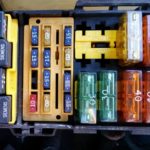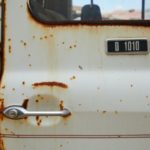Quick Navigation
Ceramic coatings are popular for their ability to protect windshields and enhance visibility, but there may come a time when you need to remove them. Whether it’s due to wear, damage, or the desire to apply a new coating, proper removal is essential to avoid damaging your windshield. This comprehensive guide will walk you through the step-by-step process, including useful information and important considerations to ensure a smooth and effective removal.

Preparing for Removal
Gathering Necessary Tools and Materials
Before starting the removal process, it’s crucial to gather all necessary tools and materials. You will need a microfiber cloth, isopropyl alcohol, a clay bar, a glass cleaner, safety gloves, and potentially a polishing machine if the coating is particularly stubborn. Having everything on hand ensures a smooth workflow without interruptions. Safety gear, such as gloves and eye protection, is also essential to protect yourself during the process.
A well-stocked toolkit helps prevent the frustration of stopping mid-process to source additional items. A microfiber cloth is ideal for its gentle touch on glass surfaces, reducing the risk of scratches. Isopropyl alcohol serves as a solvent, breaking down the ceramic coating effectively. A clay bar, used with appropriate lubricant, can physically lift and remove residual coating particles. For tougher spots, a polishing machine equipped with a glass-specific polish might be necessary. Ensuring all these tools and materials are readily available will streamline the removal process and help achieve the best results.
Ensuring a Safe Work Environment
Creating a safe work environment is critical to avoid accidents and ensure an efficient removal process. Choose a well-ventilated area to work in, preferably indoors or in the shade to avoid direct sunlight. Ensure that the working surface around your vehicle is clean and free of any debris that could cause scratches. Proper lighting is also important to see the coating clearly and work effectively. Taking these precautions helps prevent potential hazards and ensures the best results.
Working in a well-ventilated area helps dissipate fumes from chemicals like isopropyl alcohol, protecting your respiratory health. Indoors or shaded areas prevent the chemicals from evaporating too quickly, allowing them to work effectively on the coating. Clearing the workspace of debris reduces the risk of transferring contaminants onto the windshield, which could scratch the glass. Adequate lighting ensures you can see the coating clearly, making it easier to identify areas that need more attention. By setting up a safe and clean work environment, you set the stage for a successful removal process.

Initial Cleaning
Washing the Windshield
Start by thoroughly washing the windshield with a high-quality glass cleaner to remove any dirt, dust, or debris. Use a microfiber cloth to gently scrub the surface, ensuring all contaminants are removed. This initial cleaning step is crucial to prevent scratching the glass during the removal process. Rinse the windshield with clean water and dry it with a separate microfiber cloth. Ensuring the windshield is completely clean sets a solid foundation for the next steps.
A clean windshield allows for better adhesion of the removal agents and makes it easier to see the ceramic coating. Using a microfiber cloth ensures that the glass surface is not scratched during cleaning. Rinsing thoroughly removes any soap residue that could interfere with the removal process. Drying the windshield ensures that no water is left to dilute the isopropyl alcohol or other agents used later. This meticulous initial cleaning step helps in achieving a seamless removal process.
Inspecting the Coating
After cleaning, inspect the windshield to assess the condition of the ceramic coating. Look for areas where the coating might be peeling or damaged. Identifying these spots can help you focus your efforts and determine the best approach for removal. Use good lighting to ensure you don’t miss any spots. A thorough inspection helps in planning the removal process more effectively.
Inspecting the coating under good lighting helps reveal areas where the coating is intact versus where it might be compromised. Peeling or damaged sections might require a different approach compared to areas where the coating is still firmly bonded. Identifying these variations early on can save time and effort later. Documenting the condition of the coating can also help track progress and ensure all areas are addressed during removal. This careful inspection step is key to a targeted and efficient removal strategy.
Chemical Removal Method
Applying Isopropyl Alcohol
Isopropyl alcohol is effective in breaking down the ceramic coating. Pour some isopropyl alcohol onto a microfiber cloth and gently rub it onto the windshield in circular motions. Allow the alcohol to sit on the surface for a few minutes to penetrate and soften the coating. This step helps to loosen the bond between the coating and the glass, making it easier to remove. Be careful not to let the alcohol evaporate too quickly by working on small sections at a time.
The chemical properties of isopropyl alcohol make it an excellent solvent for breaking down the ceramic coating. Applying it in circular motions ensures even coverage and penetration. Allowing it to sit gives the alcohol time to interact with the coating, softening it for easier removal. Working in small sections prevents the alcohol from evaporating before it has a chance to work. This methodical application process is crucial for an effective chemical breakdown of the coating.
Wiping Off the Coating
After allowing the isopropyl alcohol to sit, use a clean microfiber cloth to wipe off the softened coating. Apply gentle pressure and continue working in circular motions until the coating begins to come off. Repeat the process if necessary, focusing on stubborn areas. It may take several passes to completely remove the coating, so patience and persistence are key. This method helps dissolve the ceramic coating without causing damage to the windshield.
The softened coating should start to lift off with repeated wiping. Gentle pressure ensures that the glass is not scratched during this process. Circular motions help lift the coating evenly, reducing the risk of streaks or patches. Stubborn areas may require multiple applications of isopropyl alcohol and additional wiping to fully remove the coating. Patience and persistence ensure a thorough removal, leaving the windshield clear and ready for final cleaning.
Mechanical Removal Method
Using a Clay Bar
A clay bar can be used to mechanically remove remaining ceramic coating. Lubricate the windshield with a suitable clay bar lubricant and gently rub the clay bar over the surface. The clay bar will pick up particles of the ceramic coating, effectively removing it from the glass. Use a back-and-forth motion and ensure the surface remains lubricated to prevent scratching. This method is effective for removing residual coating that chemical methods might have missed.
Clay bars are designed to lift and remove contaminants from surfaces, making them ideal for dealing with remaining ceramic coating particles. Lubrication is essential to prevent the clay bar from sticking to the glass and causing scratches. The back-and-forth motion helps evenly lift the coating particles, ensuring a consistent finish. Regularly kneading the clay bar exposes clean surfaces, maintaining its effectiveness throughout the process. This mechanical method complements the chemical removal, ensuring all traces of the coating are addressed.
Polishing the Windshield
For stubborn coatings that do not come off with a clay bar, consider using a polishing machine with a glass-specific polish. Apply the polish to the windshield and use the machine to buff the surface in small, controlled sections. This method requires careful handling to avoid damaging the glass. Follow the manufacturer’s instructions for the polishing machine and polish product. Polishing provides a thorough removal of the ceramic coating, leaving the windshield clear and smooth.

Polishing machines can provide the necessary abrasion to remove tough ceramic coatings. Using a glass-specific polish ensures that the product is safe for the windshield and effective in removing the coating. Small, controlled sections allow for precise work and reduce the risk of uneven polishing. Manufacturer’s instructions provide guidance on settings and techniques for optimal results. Polishing leaves the windshield not only free of the ceramic coating but also smooth and clear, ready for any additional treatments.
Final Cleaning and Inspection
Rewashing the Windshield
Once the ceramic coating has been removed, rewash the windshield with a high-quality glass cleaner to remove any residues from the removal process. Use a clean microfiber cloth to ensure the glass is spotless. This final wash ensures that no traces of the coating or removal products remain on the windshield. Rinsing with clean water and drying with a separate cloth completes the cleaning process.
The final wash removes any residues left from the isopropyl alcohol, clay bar, or polishing compounds. Using a clean microfiber cloth ensures that the glass is not re-contaminated during this step. Rinsing thoroughly removes any cleaning agent residues, leaving the windshield pristine. Drying with a separate cloth ensures that no water spots form, providing a crystal-clear finish. This meticulous final cleaning step prepares the windshield for inspection and any future treatments.
Evaluating the Results
After the final cleaning, inspect the windshield to ensure the ceramic coating has been completely removed. Look for any remaining spots or streaks and address them as needed. If you find any areas that still have coating, repeat the necessary removal steps until the windshield is completely clear. A thorough evaluation ensures that the removal process was successful and the windshield is ready for any further treatment or coating.
Evaluating the results under good lighting helps identify any areas that might have been missed. Remaining spots or streaks can be addressed with targeted applications of isopropyl alcohol, clay bar, or polish as needed. Ensuring that all traces of the ceramic coating are removed prevents interference with future treatments. A thorough inspection confirms the success of the removal process, leaving the windshield clear and ready for any additional care.
Important Considerations
Avoiding Scratches and Damage
Avoiding scratches and damage to your windshield during the removal process is crucial. Use only high-quality, soft microfiber cloths and clay bars specifically designed for automotive glass.
Avoiding Scratches and Damage
Avoiding scratches and damage to your windshield during the removal process is crucial. Use only high-quality, soft microfiber cloths and clay bars specifically designed for automotive glass. Ensure that all tools and materials are clean and free of debris before use. Working patiently and methodically helps prevent accidental damage. Always maintain proper lubrication when using a clay bar to prevent it from sticking and scratching the glass. Applying gentle pressure during wiping and polishing also minimizes the risk of damage. Taking these precautions ensures the integrity of your windshield throughout the process.
Cleaning tools regularly helps avoid transferring contaminants that could scratch the glass. Using specially designed automotive products ensures compatibility with your windshield’s material and reduces the risk of damage. Proper technique and patience are key; rushing through the process increases the likelihood of mistakes. Regularly inspecting your tools for cleanliness and wear helps maintain their effectiveness and safety. These careful practices protect your windshield and ensure a successful, damage-free coating removal.
Safety Precautions
Safety precautions should always be followed when working with chemicals and tools. Use safety gloves to protect your skin from isopropyl alcohol and other cleaning agents. Eye protection is also recommended to prevent irritation or injury from splashes. Ensure good ventilation when working with chemicals to avoid inhaling fumes. Adhering to these safety measures protects your health and well-being during the removal process.
Handling chemicals with care prevents accidental skin contact and inhalation, which can cause irritation or more serious health issues. Safety gloves provide a barrier against potential chemical burns or allergic reactions. Eye protection shields against unexpected splashes, reducing the risk of eye injuries. Adequate ventilation helps disperse fumes, preventing respiratory discomfort or damage. Following these safety guidelines ensures that the removal process is not only effective but also safe for you.
Conclusion
Removing ceramic coating from your windshield requires careful preparation, the right tools, and a methodical approach. By following this step-by-step guide, including both chemical and mechanical methods, you can effectively remove the coating without damaging your windshield. Ensuring thorough cleaning and inspection at each stage guarantees the best results and prepares your windshield for any future treatments. Taking the time to perform each step correctly ensures a smooth and successful removal process, leaving your windshield clear and ready for whatever comes next.

Patrick started his love affair with cars in his childhood. Over the years, he claims a sturdy hold on his driving skills, along with a thorough understanding of cars. We can expect some interesting, holistic, and pleasurable blogs with his flair for writing and his love for cars.
Being a car enthusiast, Patrick has experience comprising of two decades in which he has ridden some of the meanest and strongest machines in the automotive industry. His previous avatars include an automotive professional, photographer, and journalist, and you will certainly experience the roundness of experience in his piece on this site.
In his second decade of reviewing cars and analyzing tools, Patrick is all set to give you convincing, reliable, and the latest information regarding what’s happening in the automotive industry. Currently, he owns a BMW Z3 but cannot get his eyes off Aston Martin DB5. He is a car enthusiast; he loves cooking and listening to music, especially jazz. Here are some of the pieces written by our ace author.



![How to Make Car Coasters [Step-by-step Guide] How to Make Car Coasters [Step-by-step Guide]](https://carsupercare.com/wp-content/uploads/2022/11/How-to-Make-Car-Coasters-Full-Guide-150x150.jpg)


